Richard Potter

Richard Potter was born ca. 1783 in Hopkinton, MA, the grandson
of Sir Charles Frankland (the British collector for the Port
of Boston). Circumstantial evidence points to Sir Charles' son
Henry Cromwell and a freed slave of Sir Charles, Dinah, as the
parents.
Potter was raised on the Franklin Estate in Hopkinton, MA
and attended the Hopkinton School until he was 10. He hired on
as a cabin boy to a Captain Skinner who set sail for England.
Shortly thereafter, he began touring throughout Great Britain
and Europe as a circus performer. He served as an assistant to
Rannie the Scot (John Rannie) in Europe and migrated back to
the States with the Rannie troupe around 1801.
Over the next decade, Potter began performing on his own while
remaining with Rannie. When Rannie retired in 1811, Potter launched
his own independent career. His repertoire consisted of material
common to the time, but he was especially noted for his Ventriloquism
and Human Salamander pieces which garnered much praise.
By 1817, his admission fees had grown from 25 cents to $1.00.
Fabulously successful, Potter purchased 175 acres of land in
Andover, NH and built a mansion referred to as Potter Place.
It has been said that Potter's mansion was used as a model for
the first State House built in the state capital of New Hampshire,
Concord, until that building was remodeled in a French design.
When Potter retired from performing, he spent his remaining
years on his farm. He passed away at the ripe old age of 52 years
at Potter Place September 20, 1835 and was buried in a plot on
his land. One year later, his wife Sally was buried beside him.
In 1849, the railroad came through Andover, and when the townspeople
discovered that the tracks would go directly over the gravesite,
relocated the graves nearby and are tended to this day. The railroad
station was named Potter Place and that region of Andover came
to be known as Potter Place.
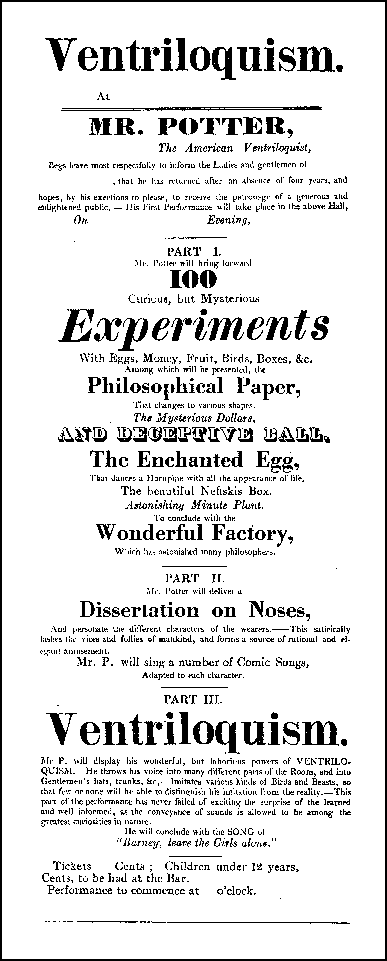


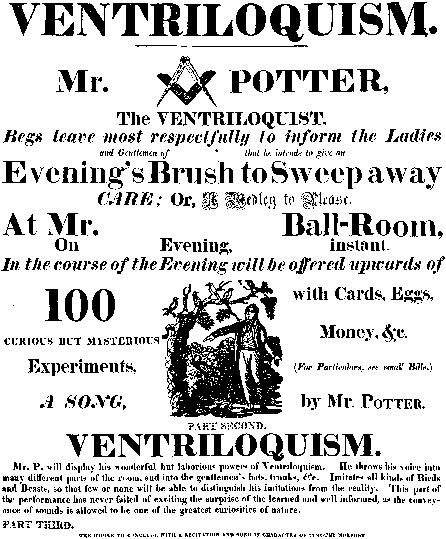
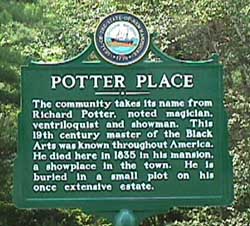
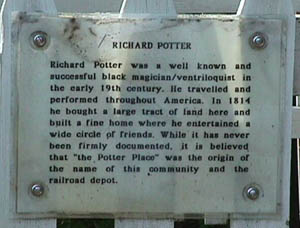
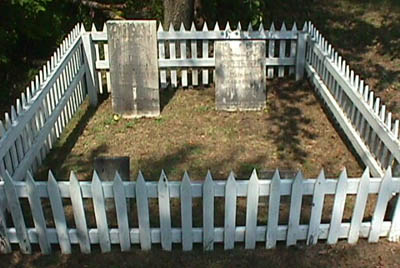
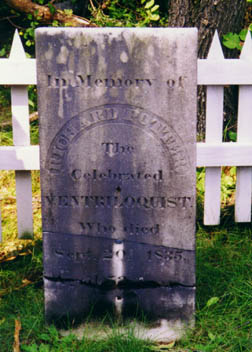 

Last revised March 26, 2007. Copyright ©
2001-2007 Andrew J.
Pinard. All rights reserved.
|